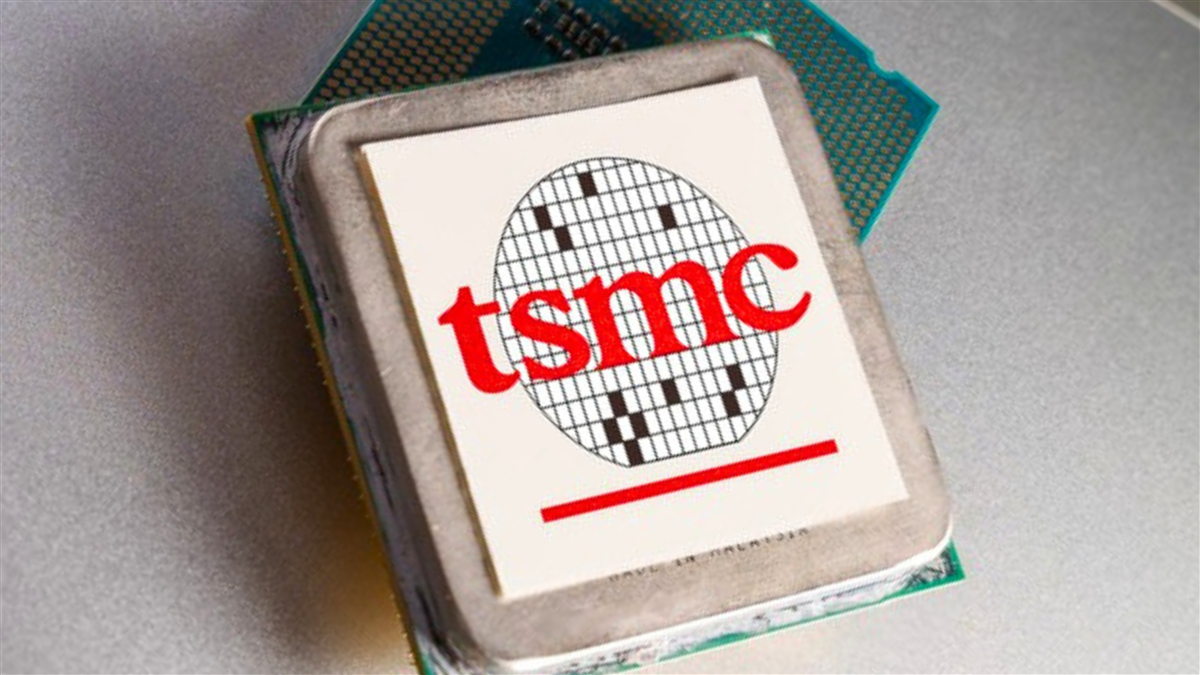 Amazon continues to rally ahead of earnings, helped by analyst upgrades and bullish momentum. But a high valuation means they must deliver... ͏ ͏ ͏ ͏ ͏ ͏ ͏ ͏ ͏ ͏ ͏ ͏ ͏ ͏ ͏ ͏ ͏ ͏ ͏ ͏ ͏ ͏ ͏ ͏ ͏ ͏ ͏ ͏ ͏ ͏ ͏ ͏ ͏ ͏ ͏ ͏ ͏ ͏ ͏ ͏ ͏ ͏ ͏ ͏ ͏ ͏ ͏ ͏ ͏ ͏ ͏ ͏ ͏ ͏ ͏ ͏ ͏ ͏ ͏ ͏ ͏ ͏ ͏ ͏ ͏ ͏ ͏ ͏ ͏ ͏ ͏ ͏ ͏ ͏ ͏ ͏ ͏ ͏ ͏ ͏ ͏ ͏ ͏ ͏ ͏ ͏ ͏ ͏ ͏ ͏ ͏ ͏ ͏ ͏ ͏ ͏ ͏ ͏ ͏ ͏ |
| | Written by Sam Quirke 
Tech giant Amazon.com Inc (NASDAQ: AMZN) continues to make a strong case for being one of the market’s top momentum plays of the year to date. Shares closed just below $230 on Monday night after a 1.4% pop extended its multi-month rally to fresh highs. The stock has been up more than 40% since April and is within striking distance of reclaiming February’s all-time high. Much of this run was fueled by the broad return to risk-on sentiment seen in equities in recent months, but Amazon’s stellar Q1 report at the start of May also had an impact. With the company due to release its latest numbers next week, those of us on the sidelines are right to be asking if we should be getting involved ahead of the release, or if it makes more sense to wait until after. Let’s look at two reasons to buy Amazon before the report, and one to wait. Reason to Buy #1. The Uptrend Is Relentless This rally has barely blinked in recent months. Since April, Amazon has consistently printed higher highs and higher lows, with no significant pullbacks, indicating strong and consistent demand on the bid. In many ways, it’s been a textbook recovery, and while you might expect conditions to be overheating, that’s not yet the case. Even with the ongoing rally, the stock’s relative strength index (RSI) sits at a healthy 66, strong, but far from overbought, suggesting there’s still room to run before any cooling off or profit-taking kicks in. The uptrend remains intact, with the bulls firmly in control. It’s a strong signal that the market expects the rally to continue through earnings, making this an attractive setup for momentum-focused investors. Reason to Buy #2. Wall Street Is Loud and Bullish Another key reason to consider Amazon ahead of earnings is the unwavering analyst support it continues to attract. This trend has remained strong in recent weeks and shows no signs of slowing, with bullish commentary and target hikes continuing to roll in. Just yesterday, July 21, the team at Robert Baird reiterated their Outperform rating and boosted their price target to $244. That follows last week’s update from Jefferies, which reiterated its own Buy rating while raising its target to $265. These moves echoed those of others like Morgan Stanley, which earlier this month came out with one of the most bullish calls yet: a $300 price target that implies around 30% upside from current levels. Given how binary earnings results can be, the fact that Amazon is still attracting big calls like these in the days and weeks before its upcoming report speaks volumes to Wall Street’s confidence in it being a good one. The Case for Waiting Of course, no stock rallies forever without pause, and next week’s numbers will be a big test for Amazon. The recent surge has pushed Amazon’s price-to-earnings (P/E) ratio up to 37, making it one of the more expensive names in big tech. Compare that to Alphabet Inc.’s (NASDAQ: GOOGL) 21 or Meta Platforms Inc.’s (NASDAQ: META) 27, and you get a sense of how the stakes are for Amazon to back up the rally. That’s precisely where the risk lies. With high expectations, any stumble, whether in AWS revenue, AI commentary, or broader forward guidance, could easily take some of the air out of the rally. Options pricing suggests investors are bracing for a post-earnings move, and history shows Amazon isn’t immune to profit-taking after big runs. So while the uptrend is intact and the sentiment is bullish, depending on your risk appetite, it may make more sense to hold off until the uncertainty has been removed. The Setup Is Bullish, But Not Bulletproof That said, Amazon is undeniably one of the top trending stocks in the market right now. The combination of price action, analyst support, and fundamental strength makes it a tempting buy into earnings. But with valuation now full and expectations high, those of us tempted to pick up some shares beforehand must be aware of the risk of anything less than a stellar report.  Read This Story Online Read This Story Online |  Congress is deep into "Crypto Week" — with new bills that could finally bring clarity to digital assets.
Crypto analyst Juan Villaverde says Bitcoin will likely keep climbing… but smaller coins could deliver far bigger gains. He's revealing the altcoins he believes are best positioned for this new regulatory era. See Juan's top altcoin picks for the new crypto bull cycle |
| Written by Gabriel Osorio-Mazilli 
One of the longer-term booms in the stock market right now is right at the center of the technology sector, as the space is responsible for most of the returns now in the S&P 500 and Nasdaq-100 indexes. This feature is likely to continue into the future, considering how relatively early it is in the artificial intelligence race not only in the United States but worldwide. With this tailwind in mind, investors can start to build their portfolio ideas and criteria around the companies that are best positioned to grow from this technology race, in some of the names that not only hold a large portion of the market but that also have made themselves indispensable for others who rely on them to keep developing the right technology and grabbing more market share. This is exactly where shares of Taiwan Semiconductor Manufacturing (NYSE: TSM) come into play for savvy investors who want to avoid other hyped-up names that operate near the bottom of the value chain. As a primary chipmaker and equipment provider, Taiwan Semiconductor’s positioning at the top of the value chain enables it to receive payment before these other companies, and this theme is reflected in the company’s earnings themselves. Taiwan Semiconductor’s Business Is Running Hot Starting with the top line, Taiwan Semiconductor’s latest quarterly earnings show investors a net revenue growth of up to 44% over the past year, which should erase most (if not all) of the fears currently present for the industry as President Trump keeps ramping up a tariff placement for China and other heavy semiconductor buyers. This significant revenue growth indicates that the industry itself isn’t slowing down, and that Taiwan Semiconductor is not affected by the macroeconomic backdrop. If anything, it suggests that its leadership position has been maintained. Here is what really matters for the future. However, Taiwan Semiconductor’s revenue was mostly focused on its 7nm and below wafers, which are currently being used to develop the latest artificial intelligence chips and data centers, considering they have the most computing power. Up to 74% of revenue came from these products, indicating little to no competition among other companies that depend on Taiwan Semiconductor as their primary supplier. This positioning, of course, translates to a high gross profit margin of up to 57.5% and net income growth of as much as 60.7% over the year. Knowing that earnings per share (EPS) drive most stock returns, investors shouldn’t be surprised to see the stock now trade at up to 96% of its 52-week high, an area where Taiwan Semiconductor could also be flirting with making a new all-time high. Even with all of this new demand from customers like NVIDIA Co. (NASDAQ: NVDA) and Apple Inc. (NASDAQ: AAPL), Taiwan Semiconductor’s management felt confident enough that guidance should be raised for future quarters and the end of 2025 as a fiscal year, which is where the benefit of being a $1 trillion company comes in as an ability to pivot. Markets React to Results Over the past month, up to 22.2% of Taiwan Semiconductor’s short interest was wiped out from the balance, showing every investor a clear sign of bearish capitulation. The fact is that, as these financial results continue to show resilient momentum and growth, this company will also continue to create a higher ceiling for itself. Investors can also see this happening as Charles Shi from Needham & Company reiterated his Buy rating on Taiwan Semiconductor stock, this time also boosting his valuation target to $270 per share. This call would not only imply the company can break into a new 52-week high, but also deliver an additional 14% upside from today’s prices. Another factor investors should keep in mind is what the so-called “smart money” is doing with Taiwan Semiconductor stock, and the answer boils down to one word: buying. Momentum and fundamental-driven money managers are having a blast seeing what this company is doing, which is why a new buyer came in the day after earnings were released. Those from Ninety One UK Ltd decided to boost their holdings in Taiwan Semiconductor stock by 1.2% as of July 2025. While this may not sound like much on a percentage basis, this new allocation brought their position to a new high of $454.3 million today, also acting as another vote of confidence for the stock's future. Chances are that, as the company continues to dominate the artificial intelligence boom and the entire industry, better earnings and financials will be reported, leading to new highs in the stock price and triggering increased institutional buying pressure to initiate a virtuous cycle for shareholders.  Read This Story Online Read This Story Online |  When the U.S. Treasury Secretary's largest personal investment is gold — that's a signal.
Now a veteran gold analyst believes Warren Buffett is preparing to follow suit… and he's identified one gold miner big enough to absorb a portion of Buffett's $330B cash pile. A key filing could confirm it by August 15th — and early investors may want to act now. Get the name and ticker in this private gold briefing |
| Written by Leo Miller 
Electric vehicle (EV) stock Lucid Group (NASDAQ: LCID) just had its best day in two and a half years. On July 17, Lucid shares rose more than 36%, putting the stock’s total return in 2025 at just under 1%. This comes after the company made a joint announcement with the world’s largest ride-sharing company, Uber Technologies (NYSE: UBER). The two are forging a significant partnership in autonomous vehicles (AVs). Let's break down the deal below and what it means for both firms. Lucid: A Volume Boost, Margin Recovery Potential, and Increased Brand Awareness Uber is aiming to deploy 20,000 or more Lucid cars for its next-gen robotaxi program. While Lucid will supply its Gravity SUV, Nuro will provide the program's autonomous capabilities. The company’s AI-first self-driving system, Nuro Driver, will give the vehicles Level 4 autonomy. This means that, in most circumstances, human intervention is not required. Lucid, Uber, and Nuro hope to deploy these 20,000 vehicles over the next six years, with the first launch in a major U.S. city in 2026. That would allow for a fairly substantial increase in Lucid’s delivery volume. Over the last 12 months, Lucid delivered approximately 11,400 cars. If Lucid adds one-sixth of the 20,000 vehicles to its deliveries over the next 12 months, this could create a 29% increase in its deliveries, all else being equal. While this would help increase the company’s revenues, that’s far from the only benefit to Lucid. This added volume also has the potential to aid Lucid’s margins significantly. Up-and-coming EV companies typically suffer from profoundly negative margins, and Lucid is no exception. In Q1, Lucid posted a gross margin of negative 97%. This means that the cost of just the materials and labor needed to make the vehicles they delivered was nearly twice the revenue they generated. Thus, the company lost thousands of dollars on each car it sold. Higher delivery volume should move Lucid’s gross margins closer to zero, the first key step in achieving profitability.
With tens of thousands of riders set to experience Lucid vehicles via Uber, the brand will receive a marketing boost. If even a small percentage of those robotaxi users decide to purchase a Lucid car for personal use, the company's sales would increase. As part of the agreement, Uber is investing $300 million directly into Lucid, giving the ride-hailing giant a stake in the company’s success—and Lucid a much-needed capital infusion to support production scaling. But there are still some unknowns. For example, the financial specifics of the full contract haven’t been disclosed. Once this happens, markets could view the deal in a less favorable light. Still, the partnership is a solidly positive development for this small EV company’s future if it executes properly on production and deliveries. Uber: High Stakes, High Risk in a Fast-Moving Autonomy Race From Uber's perspective, the new partnership represents a significant new cost, likely in the multi-billion dollar range. This is the main reason shares were down slightly on the day of the announcement. Still, it is important for the company to stay competitive in the AV market. Given that Uber sees this as becoming a “multi-trillion dollar market," sitting on the sidelines isn’t an option if it wants to capitalize. Still, Alphabet’s (NASDAQ: GOOG) Waymo and Tesla (NASDAQ: TSLA) are currently the leaders in this space, while Uber is playing catch-up. Uber lacks proprietary self-driving technology and relies instead on a network of partnerships, including not just Lucid and Nuro, but also Waymo and Aurora. This puts the company’s eggs in many different baskets, allowing it to shift more demand to the best partnership over time. However, it also demonstrates how Uber generally lacks a true technological advantage. With Lucid, Uber is betting on a relatively small EV player that has faced production issues, introducing risk that the ambitious ramp timeline will face setbacks. Still, the vast scale Uber has reached with its traditional ride-hailing service remains a reason to be optimistic about its AV strategy. Lucid Emerges as the Clear Winner... For Now In the short term, Lucid is the bigger beneficiary of the partnership, as demonstrated by both stocks' price action. LCID’s surge shows investors believe this deal could finally jumpstart the company’s slow climb toward profitability and scale. For Uber, the upside is less certain. The investment seems more of a strategic necessity than a growth catalyst, keeping Uber in the game despite the high risk. Still, both names stand to benefit significantly if the partnership proves to be fruitful.  Read This Story Online Read This Story Online |  |
| More Stories |
| |
|
|
0 Response to "🦉 The Night Owl Newsletter for July 22nd"
Post a Comment